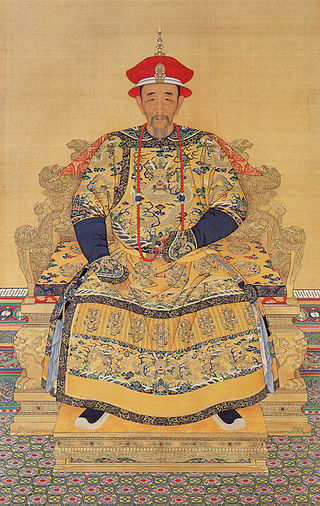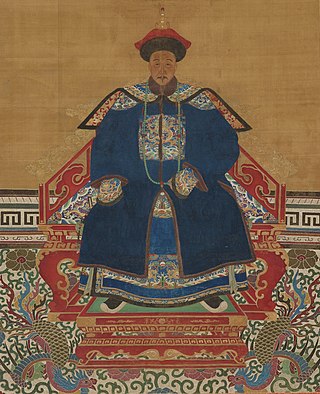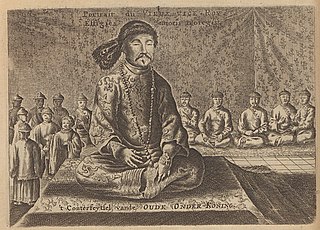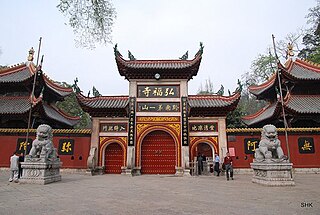| |||||
| Decades: | |||||
|---|---|---|---|---|---|
| See also: | Other events of 1672 History of China • Timeline • Years | ||||
Events from the year 1672 in China .
| |||||
| Decades: | |||||
|---|---|---|---|---|---|
| See also: | Other events of 1672 History of China • Timeline • Years | ||||
Events from the year 1672 in China .

The Kangxi Emperor, also known by his temple name Emperor Shengzu of Qing, personal name Xuanye, was the third emperor of the Qing dynasty, and the second Qing emperor to rule over China proper, reigning from 1661 to 1722.

Yinzhi, also known as Yunzhi, was a Manchu prince of the Qing Dynasty.
Yinzhi, also known as Yunzhi, formally known as Prince Zhi of the Second Rank between 1698 and 1708, was a Manchu prince of the Qing dynasty.
Yunzhi may refer to:

Shang Kexi was a Chinese general of the Ming and Qing dynasties. In 1576, his family migrated to Liaodong, and his father, Shang Xueli, served in the army guarding the northeast frontier. As his father did, Shang Kexi joined the army and guarded the frontier against the attack of the Jurchens. Shang was described to be a brave and resourceful man who was skilful at mounted archery and capable in military matters.
Prince Cheng of the Second Rank, or simply Prince Cheng, was the title of a princely peerage used in China during the Manchu-led Qing dynasty (1644–1912). As the Prince Cheng peerage was not awarded "iron-cap" status, this meant that each successive bearer of the title would normally start off with a title downgraded by one rank vis-à-vis that held by his predecessor. However, the title would generally not be downgraded to any lower than a feng'en fuguo gong except under special circumstances.
Prince Zhi of the Second Rank, or simply Prince Zhi, was the title of a princely peerage used in China during the Manchu-led Qing dynasty (1636–1912). As the Prince Zhi peerage was not awarded "iron-cap" status, this meant that each successive bearer of the title would normally start off with a title downgraded by one rank vis-à-vis that held by his predecessor. However, the title would generally not be downgraded to any lower than a feng'en fuguo gong except under special circumstances.

Zhusheng Temple is a Buddhist temple located at the foot of Mount Heng, in Nanyue District of Hengyang, Hunan, China. It was inscribed to the National Key Buddhist Temples in Han Chinese Area's list in 1983.

Guangren Temple, also called Guangren Lama Temple, is a Buddhist temple located in Lianhu District of Xi'an, Shaanxi, China. It is the only Tibetan Buddhist temple in Shaanxi.

Hongfu Temple is a Buddhist temple located on Mount Qianling, in Yunyan District of Guiyang, Guizhou, China. Hongfu Temple and Qixia Temple are collectively known as the "Two Attractions in Guiyang".
Events from the year 1667 in China.
Events from the year 1669 in China.
Events from the year 1674 in China.
Events from the year 1675 in China.
Events from the year 1683 in China.
Events from the year 1686 in China.
Events from the year 1688 in China.
Events from the year 1690 in China.
Consort Rong of the Manchu Plain Yellow Banner Magiya clan, was a imperial consort of the Kangxi Emperor of the Manchu ruled Qing dynasty.